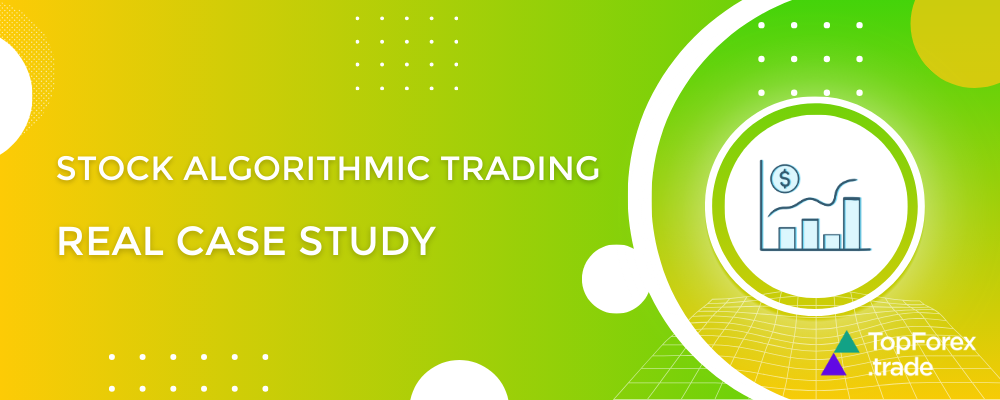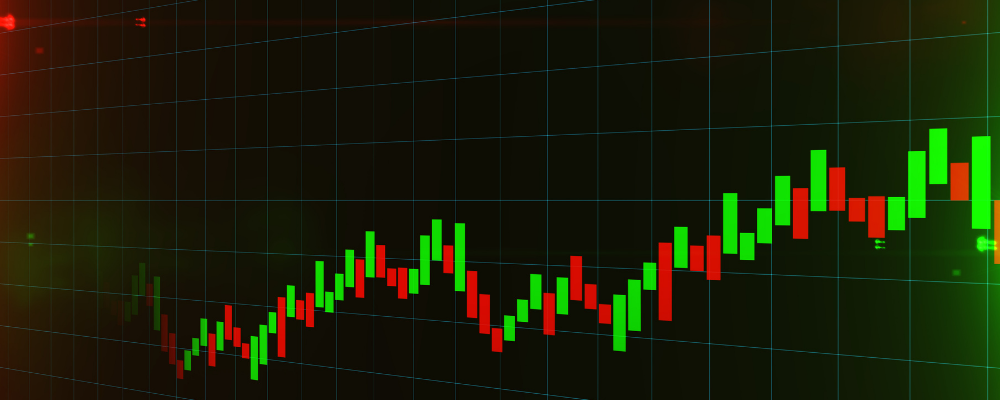Algorithmic trading in stocks: a complete guide to strategies and platforms

Algorithmic trading has revolutionized the way traders approach the stock market, enabling automated strategies that execute trades with precision and speed. But how does it work in practice? In this case study, we’ll break down what stock algorithmic trading is, explore key indicators, analyze real-world examples, and highlight top FX brokers that support algo trading.
What is stock algorithmic trading?
Stock algorithmic trading, often known as algo trading, involves using computer algorithms to automate the process of executing stock trades. These algorithms are programmed to analyze market data and execute buy or sell orders based on predefined criteria such as price, volume, and timing. The goal is to enhance trading efficiency, reduce human error, and exploit market opportunities that would be difficult or impossible for a human to spot and act upon in real-time.
In the stock market, algo trading has become increasingly popular for institutional investors, hedge funds, and even retail traders due to its ability to process large volumes of data and execute trades within milliseconds. These algorithms can follow complex strategies such as market-making, arbitrage, and trend-following, making them a vital tool in today’s high-frequency trading environment.
How stock algorithmic trading works

The process of algorithmic trading can be broken down into several key stages:
1️⃣ Market data collection: Algorithms continuously collect and analyze vast amounts of market data, such as historical price movement, order book data, and other relevant market indicators. This data is crucial for making informed decisions.
2️⃣ Algorithm development: Traders or developers design algorithms to make decisions based on certain market conditions. These conditions may include technical indicators, price patterns, or statistical models. For example, an algorithm may be designed to execute a trade when a stock’s 50-day moving average crosses above its 200-day moving average (a common bullish signal).
3️⃣ Execution: Once the algorithm identifies a trade opportunity, it automatically executes the order without any human intervention. This can happen in milliseconds, ensuring that the trade is carried out at the optimal price.
4️⃣ Risk management: Algorithmic trading strategies often include built-in risk management parameters, such as stop-loss orders, which help minimize potential losses by exiting a position if the market moves against the trader.
5️⃣ Backtesting: Before going live, algorithms are typically tested using historical data to simulate their performance. Backtesting helps to ensure the strategy’s viability under different market conditions.
Examples of stock algorithmic trading strategies
There are several types of strategies employed in stock algorithmic trading, each designed for a specific trading goal:
- Trend Following: One of the most common algorithmic trading strategies, trend following algorithms aim to capitalize on existing market trends. For example, if a stock is in an upward trend, the algorithm may identify that trend and buy the stock, holding it until the trend reverses.
- Statistical Arbitrage: This strategy involves exploiting pricing inefficiencies between two correlated stocks or markets. When a discrepancy in price is detected, the algorithm executes trades to profit from the mispricing. This type of strategy typically requires a large amount of data analysis and fast execution to take advantage of small price movements.
- Mean Reversion: The mean reversion strategy is based on the idea that asset prices tend to return to their average over time. If the price of a stock deviates significantly from its historical mean, the algorithm may execute a trade anticipating the price will revert to the mean.
- Market Making: In this strategy, the algorithm acts as a market maker, continuously buying and selling a particular stock to profit from the bid-ask spread. This type of algorithm is commonly used by high-frequency traders who need to capitalize on tiny price movements.
- News-based Trading: This strategy involves analyzing news articles, social media feeds, and other unstructured data to predict market movements. Algorithms can quickly process new information and execute trades based on positive or negative news, reacting faster than a human trader ever could.
Key technical indicators and how to use them

📈 Several technical indicators are commonly used in algorithmic trading strategies. Here’s an overview of the key indicators and how to use them effectively:
-
Moving Averages (MA): Moving averages smooth out price data to identify trends. The two most commonly used are the Simple Moving Average (SMA) and Exponential Moving Average (EMA). Moving averages can be used to generate trading signals, such as buying when the short-term MA crosses above the long-term MA (a bullish signal) or selling when the reverse occurs.
-
Relative Strength Index (RSI): The RSI measures the speed and change of price movements to determine whether an asset is overbought or oversold. An RSI value above 70 indicates that an asset may be overbought (and due for a price correction), while a value below 30 suggests the asset may be oversold (and could rise in price).
-
Bollinger Bands: These bands are used to measure price volatility. The bands widen when volatility increases and contract when volatility decreases. A stock that breaks out of the upper or lower Bollinger Band can signal a potential trade opportunity, either due to overbought or oversold conditions.
-
Moving Average Convergence Divergence (MACD): The MACD is a momentum indicator that shows the relationship between two moving averages of a stock’s price. Traders look for crossovers, divergence, and the MACD histogram to spot potential buy or sell signals.
-
Volume: Volume measures the number of shares traded in a given time period. High trading volumes can indicate strong interest in a stock and may help confirm the strength of a price movement. Algorithms can use volume data to filter out trades in illiquid stocks, reducing the risk of slippage.
How to apply algorithmic trading
If you’re new to algorithmic trading, follow these steps to get started:
- Learn the basics – Understand how financial markets work and the fundamentals of algo trading strategies like trend-following or arbitrage.
- Choose a trading platform – Use beginner-friendly platforms like MetaTrader (MT4/MT5) or TradingView, which offer built-in automation tools.
- Select a simple strategy – Start with basic strategies like moving average crossovers or RSI-based signals before exploring complex models.
- Use pre-built algorithms – Many brokers, including HF Markets and Exness, provide ready-made Expert Advisors (EAs) that you can use without coding.
- Backtest your strategy – Test your chosen algorithm on historical data to check its effectiveness before using real money.
- Start with a demo account – Trade in a risk-free environment to see how your algo performs under live market conditions.
- Gradually invest real funds – Once confident, apply your strategy to a live account with small capital, adjusting parameters as needed.
- Monitor and improve – Keep refining your algorithm based on market changes to enhance performance over time.
Starting with simple tools and a structured approach makes algorithmic trading accessible for beginners.
Real case study: algorithmic trading in action

Trader profile
- Name: Alex, a beginner trader with basic market knowledge
- Background: No prior coding experience, familiar with technical indicators
- Goal: Automate a simple trading strategy to execute trades efficiently
Step 1: Choosing a strategy
Alex decided to start with a Moving Average Crossover Strategy, a simple yet effective method where trades are triggered when a short-term moving average crosses a long-term moving average.
- Indicators used: 50-day and 200-day Moving Averages
- Entry signal: Buy when the 50-day MA crosses above the 200-day MA (Golden Cross)
- Exit signal: Sell when the 50-day MA crosses below the 200-day MA (Death Cross)
Step 2: Selecting a trading platform
Since Alex didn’t know how to code, they chose MetaTrader 5 (MT5), which supports Expert Advisors (EAs) for automated trading. Alex opened an account with HF Markets, a broker known for algo trading support, fast execution, and VPS hosting.
Step 3: Implementing the strategy
- Alex used an EA Builder to create a simple bot without coding.
- They configured the EA to automatically execute buy and sell trades based on moving average crossovers.
- Backtested the strategy on historical EUR/USD data, revealing a 65% win rate over six months.
Step 4: Testing with a demo account
Before risking real money, Alex ran the EA on an MT5 demo account for one month. The results:
- Total Trades: 50
- Win Rate: 60%
- Max Drawdown: 5%
The strategy showed promise, so Alex decided to move to live trading with a small deposit of $500.
Step 5: Live trading & adjustments
- The EA executed trades automatically, removing emotional decision-making.
- Alex monitored performance daily and adjusted risk settings.
- After three months, the account grew to $650, a 30% return, proving the power of algorithmic trading for beginners.
Key takeaways
✅ Start with a simple strategy that requires minimal coding.
✅ Use brokers with algo trading support, like HF Markets or Exness.
✅ Backtest and demo trade before using real money.
✅ Monitor performance and adjust parameters as needed.
This beginner-friendly approach allowed Alex to automate trading with minimal experience.
Top FX brokers for algorithmic trading
If you’re looking to implement algorithmic trading strategies in the forex market, it’s essential to choose a broker that offers robust infrastructure, low-latency execution, and comprehensive algorithmic trading support. Here are some of the top FX brokers for algorithmic trading:
HF Markets FX trading
HF Markets (HotForex): Known for its advanced trading platform MetaTrader 4 and 5, which supports expert advisors (EAs), HF Markets offers low-latency execution, strong liquidity, and VPS hosting options that ensure your algorithms run smoothly 24/7.
AvaTrade FX trading
AvaTrade: AvaTrade provides a wide range of platforms, including MetaTrader and AvaTradeGO, both of which are compatible with automated trading strategies. The broker’s offering includes algorithmic trading tools for both beginners and advanced traders.
XTB FX trading
XTB: XTB’s xStation platform supports automated trading and is equipped with advanced charting and analysis tools, making it ideal for algo traders.
Exness FX trading
Exness: Exness offers an extensive suite of tools for algorithmic trading, including MetaTrader 4 and 5. The broker’s high-speed execution and low spreads make it a preferred choice for high-frequency trading.
BlackBull Markets FX trading
BlackBull Markets: BlackBull provides institutional-grade infrastructure with advanced trading platforms such as MetaTrader, making it suitable for algorithmic trading strategies that require fast execution and direct market access.
Related articles:
FX algorithmic trading - FAQ